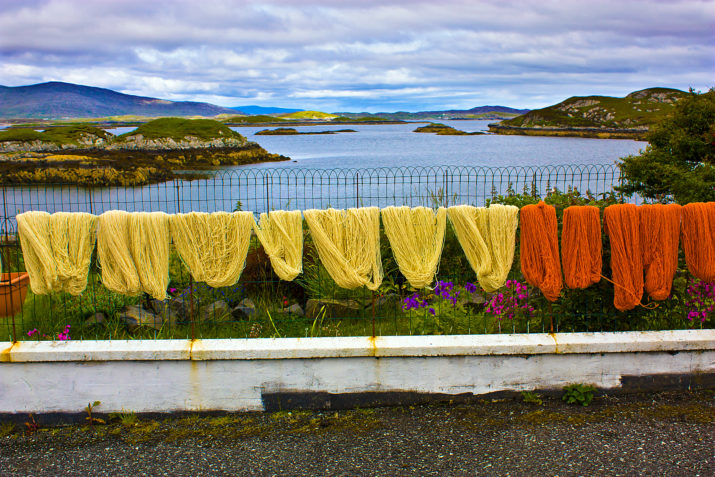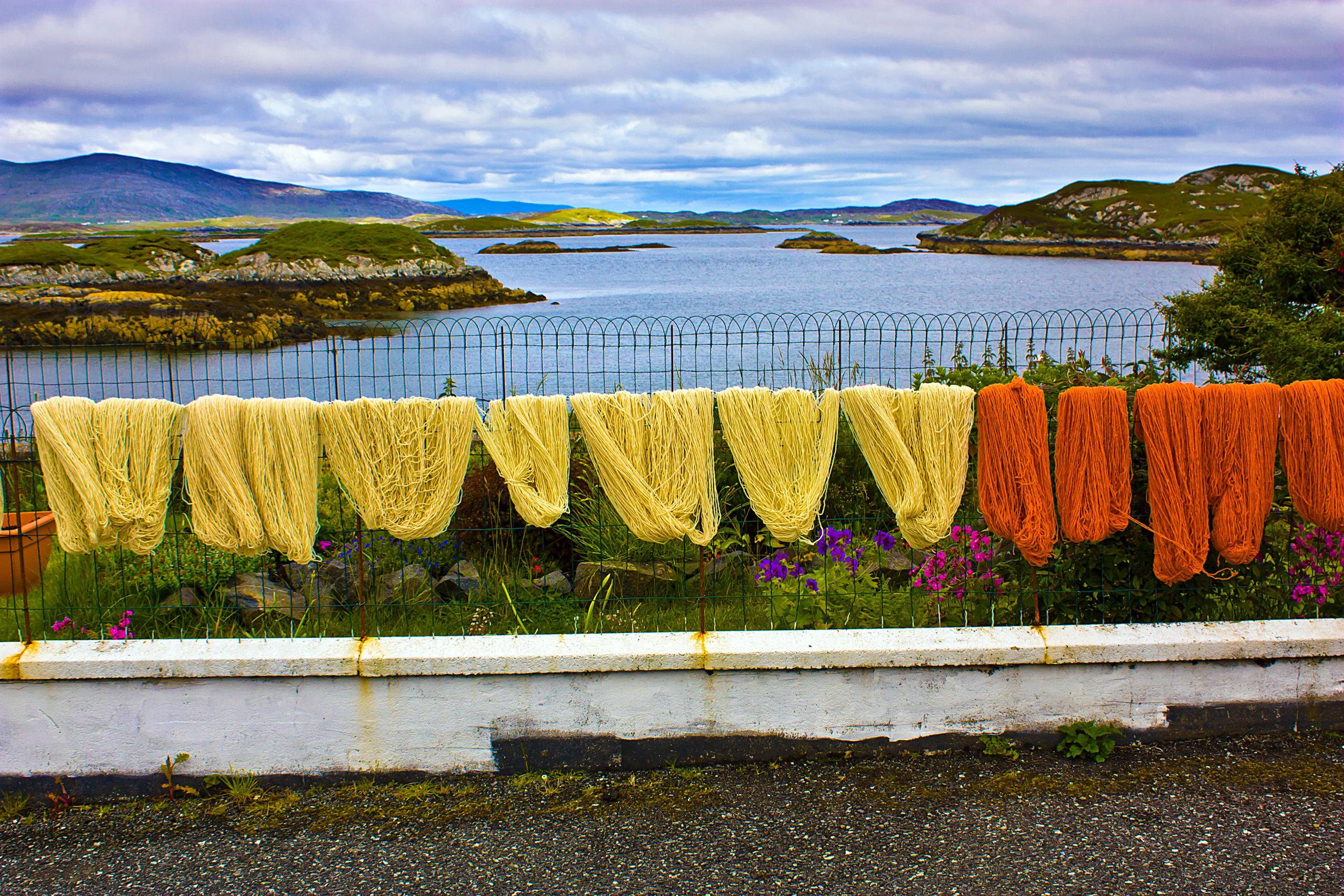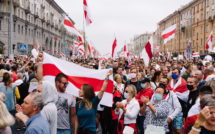

This is part of our special feature, Rurality in Europe, and part of a series on the Novel Coronavirus (COVID-19) pandemic.
Far from cities and geographically distinguished from mainland rural places, Scotland’s islands are varied in landscape, economy, and community make-up, yet share key challenges and are increasingly positioned to address these together in the context of national and regional government. 2020 is an important moment for Scotland’s Western Isles (Na h-Eileanan an Iar in Scots Gaelic) and Northern Isles (comprising two island groups, Shetland and Orkney) in both long-awaited and unexpected ways. First, this is the year when a much-discussed strategic economic plan―the Islands Growth Deal―is delivered. Second, the crisis of the coronavirus pandemic is forcing sudden adaptations to daily life and making people everywhere think differently about what makes islands good or difficult places to live in. The idea of islands as creative places is an important part of both regional planning and evolving public perceptions.
Most UK cultural and creative policy and attendant research has focused on cities; concepts such as the “creative industries” and “creative economy” have developed almost inseparably from particular visions of urbanity (see Bell and Jayne 2010). The awkward fit between the language and methods of this field and rural places is partly a matter of scale. Mapping and measuring activity and impact, a prime concern of much creative economy research, is a different proposition where “cultural workers…tend to be operating on smaller, more individuated scales” (Luckman 2012). While “islands and island communities in Scotland are, by definition, rural places [which] share many similar facets and traits with rural areas across Scotland” (Sindico and Crook 2019) the issue of scale is even more salient for island places than for mainland rural areas. Smallness is these islands’ starkly defining characteristic, with many of the challenges commonly faced by rural populations (eg diversity of employment, ageing, transport, and digital connectivity) crystallized by smallness of landmass. This sense of scale also affects the impetus for cultural policy-making and governmental support for creative activity. While the grandiosity of some claims about cultural policy’s economic and social impact on cities have been strongly critiqued, instrumental arguments for the value of cultural and creative activity have leveraged the sense that initiatives located in major cities can have regional, national, and international effects. The significance of island places beyond their own shores is less taken for granted.
Yet, small islands are often viewed as founts of “inspiration” for creative production, including production that happens elsewhere, and island cultural heritage, from archaeology to linguistic diversity, is an important marker of cultural identity for Scotland and indeed the UK. Scotland’s islands are home to traditional music, textiles (eg Harris Tweed and fair isle knitting) that have travelled and been reinterpreted around the world, and rich literary cultures, spanning Scots Gaelic and the dialects of Shetland and Orkney as well as English. Contemporary “artists, craftworkers and those working in the creative and cultural industries” pursue a wide range of “good work” in these places (Stalker and Burnett 2018, 239). As Baldacchino (2013, 17) remarks, “European islands are crucibles of identity and culture.” In terms of creative influence and cultural identity-making (as well as in other areas, such as the crucial field of energy production) Scotland’s small islands punch above their weight.
In recent years, a new stream of Scottish “islands” policy has been developed, originating with the “Our Islands: Our Future” campaign, launched in 2013, which was a joint campaign by local authorities in Shetland, Orkney, and the Western Isles (Na h-Eileanan an Iar), to investigate and represent their shared interests. This resulted in “A Framework for the Islands” (2014), established by the UK Government and the Three Scottish Island Councils (Comhairle nan Eilean Siar, Orkney Islands Council and Shetland Islands Council) in recognition that “the three Islands Councils have chosen to adopt a collective position in dealing with the UK Government on certain matters” (2014, 1). The “Economic Development” section of the Framework mentions the commercial success of some island “Textiles,” and the role of the islands’ “distinctive cultural identities” and “local creative industries” in the “tourism sector.” “Our Islands Our Future” also resulted in the Scottish Government’s Islands (Scotland) Act 2018, which included a commitment to create a National Islands Plan. In the resulting National Islands Plan (2019), the section on “Arts, Culture and Language” both mentions the role of “culture and heritage” in islanders’ “sense of ‘self’ and ‘community,’” and suggests that the “creative and cultural industries make a substantial contribution to driving economic activity within the islands and offer a significant opportunity for future economic growth and diversification.”
The above surge of “islands” policy-making, initiated by Scotland’s three islands-specific local councils, forms the background to the development of the Islands Growth Deal, which carries £100 million of investment in total from the UK and Scottish governments. The Islands Growth Deal is part of a series of “Deals” which will eventually cover the whole of Scotland, each investment plan agreed between local, Scottish and UK levels of government. While these began with a focus on cities and their surrounding regions (eg the Glasgow City Region City Deal 2014, Aberdeen City Region Deal 2016, Inverness and Highland City Region Deal 2016 etc, see Audit Scotland 2020), the development of “Growth Deals” for rural areas such as Ayrshire, Borderlands, and Moray followed. Some of Scotland’s islands are included in mostly-mainland regions for these purposes, reflecting their local council areas (eg Skye is included in the Inverness and Highland City Region Deal and Jura is included in the Argyll and Bute Growth Deal). However, Na h-Eileanan an Iar(the Western Isles), Orkney, and Shetland are each a group of islands with their own local council, and these three areas, which joined forces in the “Our Islands: Our Future” initiative, form one Growth Deal area.
The fact of a single Growth Deal being so dispersed—stretching from Na h-Eileanan an Iar, off the west coast of Scotland, to Orkney off its northeast coast and Shetland about 120 miles still to the northeast of that—demonstrates the degree to which these distant places with their different histories are able to (and, perhaps, need to) align their priorities based on their shared island-ness. Taking a more “archipelagic” (Glissant 1990) approach goes some way to address the issue of scale discussed above, while allowing distinct island challenges (eg around sea transport and connectivity, or the impact of fluctuations in population) to be highlighted rather than subsumed in general discussions about rurality. It also offers a platform for sharing island-based insights, opportunities and cultural capital. Roberts and Townsend (2016, 208) suggest that “The extent to which rural creatives are developing cultural capital in their communities depends on how much their practices are community-facing or city-facing.” For creative practitioners in island places, an inter-island approach provides a third perspective, a way of contextualizing island communities aside from their relationship to (or as it is usually described, remoteness from) urban population centers.
Within the Islands Growth Deal, “creativity” and “wellbeing” have been combined into the same strand of projects and funding. This could be seen as a choice not to approach island creativity only, or primarily, through the lens of the “creative industries,” but to emphasize a broader sense of creative activity as part of what makes a place liveable on an individual and community level. The idea of attracting and sustaining particular populations is embedded within creative industries/economy discourse, with Florida’s (2005) influential concept of the “creative class” and subsequent debates about gentrification and critiques of the “art-washing” of rapacious urban development. In the case of Scotland’s small islands, population size and demographics are common sources of concern, whether because populations are shrinking, ageing or increasingly non-resident. The idea that creative activity can enhance “liveability” is therefore potentially attractive to those concerned about island resilience, but the familiar tropes of urban creative place-making are particularly ill-fitted to small island places, their established communities and some of the reasons people choose to live there.
For example, what “success” looks like may differ in small island settings. Ambitious creative practitioners in small islands cannot be assumed to desire “growth” in the sense of scaling up their business or sector (McHattie et al. 2019). Of course, this assumption does not hold true for many urban creative practitioners either (Luckman 2018), yet “growth” and “competitiveness” as measures of success continue to orient much creative and cultural policy-making (Banks 2020). At a time when post- and de-growth economic models are gaining mainstream attention due to the urgency of climate crisis, the idea of post-growth, de-growth, or alternative creative economies is pressing (Luckman 2018; McFadyen 2019; Banks 2020). What do these look like and what is their potential? Moreover, where might they be located? Scotland’s islands offer one opportunity to explore this, including the consideration of other forms of “growth” than extractive expansion—the growth of roots, for example, or connections.
Small islands are often mythologized as places of either refuge or imprisonment (see Baldacchino 2013). In the wake of the covid-19 pandemic of 2020, this dichotomy is reasserting itself. Following and even during lockdown measures in the UK, Scotland’s islands featured in the press as an imagined escape from the pandemic and its restrictions (eg Crossan 2020). Simultaneously, some small island communities begged visitors to stay away, worried about their distance from intensive care facilities and the potential vulnerability of elderly and close-knit populations (Duffy 2020). As the immediate crisis of the first wave has turned into an open-ended new reality, islands have been reckoning with the implications as much as anywhere else. Scotland’s system of localized restrictions has enabled places like Na h-Eileanan an Iar (the Western Isles), Orkney, and Shetland to regain a relatively high degree of normality within their shores, fuelling local debate about the ethics of travel to and from higher-risk areas. Small islands cannot be assumed to be safe, of course, and all these island groups have experienced some degree of COVID-19 outbreak in recent months.
Beyond tourism, the changes the pandemic has caused to working patterns and digital interaction may recalibrate the factors that make small islands relatively good or difficult places to live in. On the one hand, post-lockdown hunger for open spaces and the widespread adoption of remote working may make island life more attractive; on the other hand, the newly-universal experience of unpredictable travel restrictions makes being “marooned” not a romantic hypothetical but a practical consideration. Attracting “digital nomads,” people choosing to travel for shorter or longer periods while working remotely, was a goal of island communities in places such as Ireland and Denmark before the pandemic (Glass et al. 2020, 43). The long-term effects of the pandemic on this phenomenon, as well as on more permanent working-age arrivals, are yet to be seen, but “The COVID Effect” is already credited with exacerbating the shortage of affordable housing in Na h-Eileanan an Iar (the Western Isles) and the island of Skye that makes it impossible for many young islanders to stay there (Hookway 2020). Longstanding tensions around home ownership, tourism and the fraught question of what makes an “islander” (Burnett and Stalker 2016: 242; see also McAra 2020) take on a new ethical edge in the pandemic, when travel and separation have starker implications. Efforts to both attract and retain working-age residents must take account of these changed considerations.
Shetland Islands Council’s Director of Development Services, Neil Grant, recently commented on the need for island place-branding to be realistic, commenting on the importance of being “honest about how we think about ourselves” (Cope 2020). As Scotland’s island communities adapt to post-pandemic norms and the much-debated Islands Growth Deal is enacted, the goal of creative and cultural policy-making must, equally, be supporting islands as places to lead a real life, rather than escape one.
Siún Carden is a Research Fellow in the University of the Highlands and Islands’ Centre for Island Creativity, in Shetland, Scotland. She teaches on UHI’s MA in Art and Social Practice and is Principal Investigator on Home and Belonging, an arts-based research project with care experienced young people, which is supported by Life Changes Trust with funds from the National Community Lottery Fund. Her research interests include creative economies, islands, and knit textiles.
References:
Audit Scotland. 2020. “Scotland’s City Region and Growth Deals.” Accessed October 27, 2020. https://www.audit-scotland.gov.uk/report/scotlands-city-region-and-growth-deals.
Baldacchino, Godfrey. 2013. “Island Landscapes and European Culture: An ‘Island Studies’ Perspective.” Journal of Marine and Island Cultures 2 (1): 13–19. https://doi.org/10.1016/j.imic.2013.04.001.
Banks, Mark. 2020. “Creative Economy, Degrowth and Aesthetic Limitation.” In Cultural Industries and the Environmental Crisis: New Approaches for Policy, edited by Kate Oakley and Mark Banks, 11–23. Cham: Springer International Publishing. https://doi.org/10.1007/978-3-030-49384-4_2.
Bell, David, and Mark Jayne. 2010. “The Creative Countryside: Policy and Practice in the UK Rural Cultural Economy.” Journal of Rural Studies 26 (3): 209–218.
Burnett, Kathryn A., and Lynda Harling Stalker. 2018. “‘Shut Up for Five Years’: Locating Narratives of Cultural Workers in Scotland’s Islands.” Sociologia Ruralis 58 (2): 239–57. https://doi.org/10.1111/soru.12137.
Cope, Chris. 2020. “Isles Need to Be Promoted in ‘Honest’ Way Following Rebrand, Development Chief Says.” Shetland News, November 19, 2020. https://www.shetnews.co.uk/2020/11/19/isles-need-to-be-promoted-in-honest-way-following-rebrand-development-chief-says/.
Crossan, Rob. 2020. “Britain’s Brilliant Boltholes: The best places to revel in splendid isolation, from the lonely Lancashire hills to the Welsh wilderness.” Daily Mail. March 21. https://www.pressreader.com/uk/scottish-daily-mail/20200321/282926682476072. Accessed 20/11/2020.
Duffy, Elle. “Coronavirus in Scotland: Scottish Islands and Rural Areas Urge Tourists to Stay Away during COVID-19 Pandemic.” Herald Scotland. March 21 2020. https://www.heraldscotland.com/news/18324119.coronavirus-scotland-scottish-islands-rural-areas-urge-tourists-stay-away-covid-19-pandemic/. Accessed November 18, 2020.
Florida, Richard. 2005. Cities and the Creative Class. London: Routledge.
Glass, Jayne; McMorran, Rob; Jones, Sarah; Maynard, Carly; Craigie, Marcus and Weeden, Ashleigh. 2020. “Case studies of island repopulation initiatives.” SRUC Rural Policy Centre Research Report. https://www.sruc.ac.uk/repopulationreport. Accessed 20/11/2020.
Glissant, Edouard, and Pierre Joris. 1999. “From Introduction to a Poetics of the Diverse.” Boundary 2 26 (1): 119–21.
Hookway, James. 2020. “Covid-19 Effect Is Pricing Out Locals From Scotland’s Rugged Western Isles.” Wall Street Journal, November 21, 2020, sec. World. https://www.wsj.com/articles/the-covid-effect-is-pricing-out-locals-from-scotlands-rugged-western-isles-11605970802.
Islands (Scotland) Act 2018. 2018. Queen’s Printer for Scotland. Accessed November 17, 2020. https://www.legislation.gov.uk/asp/2018/12/enacted.
Luckman, Susan. 2012. “Introduction: Space for Creativity.” In Locating Cultural Work: The Politics and Poetics of Rural, Regional and Remote Creativity, edited by Susan Luckman, 1–13. London: Palgrave Macmillan UK. https://doi.org/10.1057/9781137283580_1.
Luckman, Susan. 2018. “Craft Entrepreneurialism and Sustainable Scale: Resistance to and Disavowal of the Creative Industries as Champions of Capitalist Growth.” Cultural Trends 27 (5): 313–26. https://doi.org/10.1080/09548963.2018.1534574.
McAra, Marianne. 2020. “‘Living in a Postcard’: Creatively Exploring Cultural Heritage with Young People Living in Scottish Island Communities.” International Journal of Heritage Studies 0 (0): 1–17. https://doi.org/10.1080/13527258.2020.1795905.
McFadyen, Mairi. 2019. “The Creative Economy? Towards A Culture of Possibility.” Bella Caledonia October 20. https://bellacaledonia.org.uk/2019/10/20/the-creative-economy-towards-a-culture-of-possibility/.
McHattie, Lynn-Sayers, Katherine Champion, and Michael Johnson. 2019. “Crafting the Local: The Lived Experience of Craft Production in the Northern Isles of Scotland.” Cultural Trends 28 (4): 305–16. https://doi.org/10.1080/09548963.2019.1644791.
Roberts, Elisabeth, and Leanne Townsend. 2016. “The Contribution of the Creative Economy to the Resilience of Rural Communities: Exploring Cultural and Digital Capital.” Sociologia Ruralis 56 (2): 197–219.https://doi.org/10.1111/soru.12075.
Scottish Government. 2019. “The National Plan for Scotland’s Islands.” Accessed October 27, 2020. https://www.gov.scot/publications/national-plan-scotlands-islands/pages/14/.
Sindico, Francesco, and Nicola Crook. 2019. “Placing the Community at the Heart of Island Governance: The Islands (Scotland) Act 2018.” Edinburgh Law Review 23 (3): 441–48. https://doi.org/10.3366/elr.2019.0583
UK Government and the Three Scottish Island Councils. 2014. “A Framework for the Islands.” Accessed October 27, 2020. https://assets.publishing.service.gov.uk/government/uploads/system/uploads/attachment_data/file/344446/UKG_ISLANDS_FRAMEWORK_-_15_August.pdf
Photo: Isle of Harris, Scotland | Shutterstock
Published on November 24, 2020.




